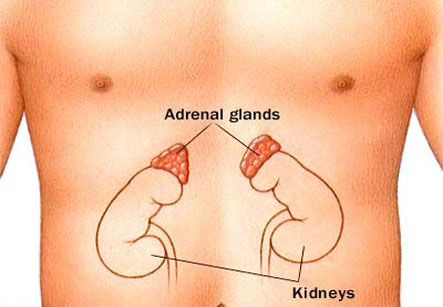Adrenal Surgery
Introduction
Adrenal glands lie just above the both kidneys. It looks like a cap. These are vital organs that secrete various steroidal hormones essential for life: glucocorticoids, minerelocorticoids, sex steroids and adrenaline. Tumours of this gland can be cancerous or non-cancerous type. Signs and symptoms of different tumours occur due to alteration of above mentioned hormones in human body.
Adrenal Surgery
In most cases, adrenal tumor is removed by laparoscopic procedure. It is called laparoscopic adrenalectomy. Some patients may require open adrenalectomy instead of laparoscopic adrenalectomy. In a laparoscopic surgery small incisions are made over the abdomen and thin long tubes with instruments at the end are inserted for the surgery. This type of surgery takes shorter time and ensures a faster recovery.
Certain risks are involved with surgery. Chances of bleeding and fluctuation of blood pressure may be seen. Chances of infection are low. Relative risk of complications is also very low.
Today, with the technique known as minimally invasive surgery, removal of the adrenal gland (also known as “laparoscopic adrenalectomy”) can be performed through three or four 1/4-1/2 inch incisions

Before and during surgery
Proper preoperative evaluation of the patient needs to be done once surgery is planned. Some routine blood tests and investigations like ECG, chest X ray etc will be done to ensure adequate heath to withstand a surgery. Bowel preparation will be started 48 hours prior to surgery. This might include use of laxatives to clear the intestines. The patient will have to fast on the day of surgery. The surgery will be done under general anesthesia where the patient is rendered unconscious. In open surgery the abdomen is cut open after the skin is cleaned with an antiseptic lotion and draped with sterile surgical drapes. The incisions are made over the side of the abdomen. The surgery involves removal of the tumor and suturing all the blood vessels that have been cut during the surgery. The blood vessels may also be cauterized with electricity to prevent bleeding. After surgery the patient will be kept in the recovery room. From the evening onwards the patient will have liquid diet per mouth.
The patient will have keep the operative wound clean and dry until sutures are removed. This may be 7 to 10 days after surgery.
After discharge the patient will gradually resume to normal diet. Patient will be on medication for some days. The medicines will include routine antibiotics, pain killers etc. the former prevents infections and the latter relives pain. The patient will take one to two weeks to return to normal activities. Initially the patients will have minor problems, which will subside gradually. The patient will have keep the operative wound clean and dry until sutures are removed. This may be 7 to 10 days after surgery. Any redness, tenderness or swelling of the wound area should promptly be reported to the doctor. Follow up care is very essential for recovery. Regular visits to the doctor will ensure proper care and early recovery.